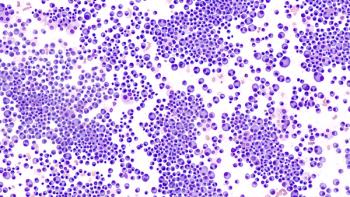
Ovarian Suppression Combined with Tamoxifen May Help Premenopausal Patients
A phase III study found that adding 2 years of ovarian function suppression to tamoxifen extended disease-free survival in certain patients with hormone receptor-positive breast cancer.
The addition of 2 years of ovarian function suppression to tamoxifen extended disease-free survival (DFS) in patients with hormone receptor—positive breast cancer who remained premenopausal or resumed ovarian function after chemotherapy, according to phase III study results published in the Journal of Clinical Oncology.
Moreover, estimated 5-year DFS rates were 91.1% in the ovarian function suppression/ tamoxifen group, compared with 87.5% in the tamoxifen-only group (HR, 0.69; 95% CI, 0.48-0.97; P = .033).
Estimated 5-year overall survival (OS) also increased accordingly: 99.4% versus 97.8%, respectively (HR, 0.31; 95% CI, 0.10-0.94; P = .029).
The findings were from the Korean Breast Cancer Study Group and were part of the long-running Suppression of Ovarian Function Trial (SOFT) studies, which began in 2003.
“The (SOFT) trial has shown that the addition of (ovarian function suppression) to (tamoxifen) provides a survival benefit for premenopausal women with hormone receptor—positive breast cancer, particularly for those who receive adjuvant chemotherapy. However, studies for the optimal use of (ovarian function suppression) for premenopausal women, particularly after completing chemotherapy, are limited,” the investigators wrote.
Therefore, they evaluated the addition of ovarian function suppression to tamoxifen in 1,282 patients, aged 45 or younger, with hormone receptor—positive breast cancer who remained in a premenopausal state or resumed ovarian function after chemotherapy.
After a median follow-up of 63 months, the researchers observed that these results were concordant with those of the SOFT trial; however, they noted that further research is warranted.
“Although the addition of (ovarian function suppression) to tamoxifen generally is accepted to provide survival benefit for premenopausal women with hormone receptor-positive breast cancer, uncertainty still exists about patient selection, the best timing, and optimal duration,” they wrote. “This study suggests that the use of (ovarian function suppression) for 2 years from the point of resumption of ovarian function could be an option.”
Newsletter
Knowledge is power. Don’t miss the most recent breakthroughs in cancer care.
















































































